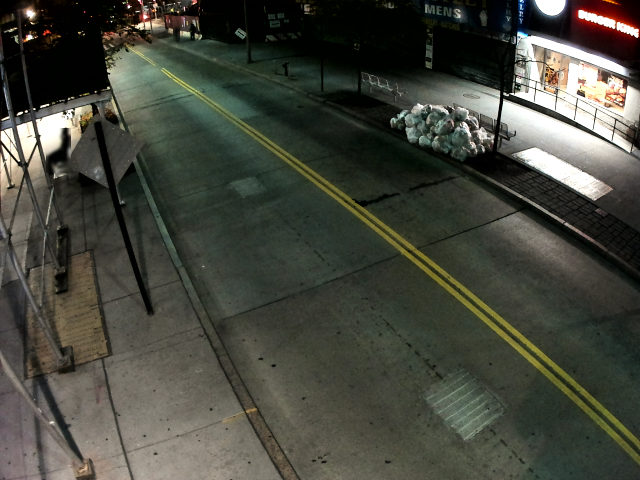
In New York City, construction and scaffolding are familiar backdrops of daily life, from the drone of jackhammers as an early morning wake-up call to commute detours due to an unexpected sidewalk closure or delivery truck parked in a bike lane. With over 300 miles of scaffolding in the city, at scale, these street level changes present a safety concern for pedestrians and disrupt the flow of traffic across all modes (e.g. pedestrian, bicycle, car).
At Numina, we measure a wide range of indicators of mobility and quality of life on our streets, including traffic volume counts, pedestrian road crossing paths, and incidents of illegal activity such as cars driving in the bus lane. This year, we measured the impact of a month of construction and scaffolding at a section of the Fulton Mall in Downtown Brooklyn. As a major shopping destination and at the heart of the City’s third largest Central Business District, Fulton Mall is a hotspot for commuters and shoppers, and sees high pedestrian and cyclist activity throughout the area. However, it also hosts several bus stops and receives a significant amount of truck and car activity.
When we installed our sensors on Fulton Mall, with support from New Lab and Downtown Brooklyn Partnership, we noticed the prevalence of scaffolding in our image views, foreshadowing the high levels of construction in the area. A few weeks after, the first project, a building demolition, began, closing down an entire stretch of sidewalk, and on some days, even the road.
After a few days, the road was cleared, but only a small opening connected the sidewalk across either side of the construction site. This forced pedestrians to step into the road often and even walk in the road regularly. Seasons passed, and even during snowy days, pedestrians found themselves sharing the road with vehicles, often large trucks and buses.
Over a month after construction began, the sidewalk was partially reopened, but the scaffolding remained, and pedestrians continued to walk in the street occasionally. We compared pedestrian activity during the construction period,10/11/18 – 11/19/18, to that before and after construction. By applying spatial analysis techniques to our pedestrian movement data, we were able to analyze how many more pedestrians walked on the street when the sidewalk was obstructed by construction. The data showed that pedestrians were 53.3% more likely to walk in the road during that time frame.
Some other troubling trends we observed occurred when delivery trucks parked on the side of the two-lane road, effectively shutting down a lane and transforming the street into a one lane road. With pedestrians, cyclists, and two directions of car, bus, and truck traffic sharing one lane, risk of collision between any of these modes increased significantly.

Two months after this construction project ended, another began at the end of the block, at the Fulton & Flatbush intersection, shutting down part of the sidewalk on the other side of the street. While building and street development is an inevitable part of New York City life, efforts can be made to improve safety conditions during these projects, such as better signage to inform pedestrians early on of a road closure, temporary pedestrian refuges or mid-block crosswalks at busy intersections, or better enforcement of idling vehicles during this period.
One of Numina’s goals is to provide responsible, secure, objective intelligence about the impact of street changes on everyone who uses our public realm, to identify opportunities for positive interventions improving safety, efficiency, and enjoyment of streets. Better understanding of construction’s impact on streets invites new ideas for temporary pedestrian infrastructure and ways to reimagine the streetscape during times of change.






Pingback: Study: Scaffolding Pushes Pedestrians Into The Street – Streetsblog New York City
Comments are closed.